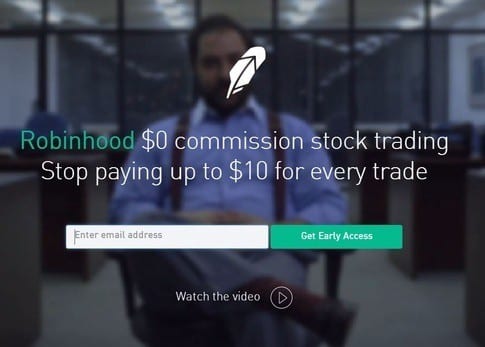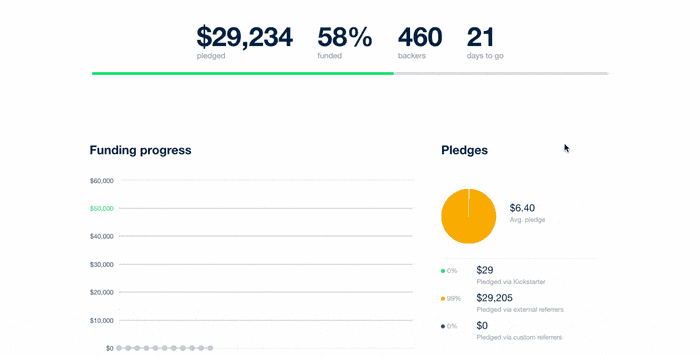When it comes to laying it all out on the line, there’s no better example than launching a Kickstarter campaign for a product you’ve put your money, heart, and soul into. This all-or-nothing fundraising platform can be a rollercoaster of emotion for entrepreneurs, and just the thought of throwing more money into advertising your projects can cause heart palpitations. We recently had the opportunity to work with a client who had a Kickstarter campaign, and we were able to learn and understand some of the do’s and don’ts of a successful Kickstarter marketing campaign. To help ease some of the stress, here are some things we’ve learned that can help make the difference between a flop and a screaming success.
Start the Pre-Party
 Creating anticipation to your Kickstarter is a great way to build interest before you are even prepared to launch. If you have a website, it’s time to start collecting emails, and more importantly interest in your product. With all this said, you’ll need a great product, professional photos and a great video story to back it up. Begin to work on your e-newsletter templates. From the pre-launch email to your last chance email and everything in between. In addition to the emails you’re collecting, it’s also smart to begin collecting visitors. Through Google Analytics and Facebook, you can use remarketing tracking pixels to collect user lists that can be later used for ads (nothing more targeted than that). When you build these ads, consider building some variations and use time-sensitive calls to action.
Creating anticipation to your Kickstarter is a great way to build interest before you are even prepared to launch. If you have a website, it’s time to start collecting emails, and more importantly interest in your product. With all this said, you’ll need a great product, professional photos and a great video story to back it up. Begin to work on your e-newsletter templates. From the pre-launch email to your last chance email and everything in between. In addition to the emails you’re collecting, it’s also smart to begin collecting visitors. Through Google Analytics and Facebook, you can use remarketing tracking pixels to collect user lists that can be later used for ads (nothing more targeted than that). When you build these ads, consider building some variations and use time-sensitive calls to action.
Set Up Tracking
Your Kickstarter dashboard allows you to track visitors with Google Analytics, and also custom tag URL referrers so you can track the source of your donors. For every medium you use – be that your first e-mail, your Facebook Newsfeed, Twitter, and Instagram – use different tracking URLs for each, so you can identify which mediums are delivering and which are flops. When we run campaigns, we like to tag our ads independently as well, so we can track the effectiveness of ad type in addition to our ad targeting.
Also, make sure you’ve turned on e-commerce tracking in Google Analytics. This can automatically pull in the value of their Kickstarter purchase into your data, so you can determine direct ROI. Not a bad perk, and great for optimizing ad performance down the road.

Using Facebook Ads
The biggest challenge about advertising a Kickstarter campaign is that you don’t know if the people you’re advertising to have a Kickstarter account in the first place. While this poses a challenge for the user experience, Kickstarter has done a good job of allowing non-Kickstarters the ability to easily donate. For our campaigns, we have tried images, carousels, video ads and combinations of each to try to drive conversions. Through our experimentation, we discovered that the simpler the message, the more effective the result. By leaving our clickers wanting more while explaining the start-up was from a local entrepreneur, we were able to generate interest and, frankly, that warm fuzzy feeling of helping out a friend. We used targeting that combined individuals who had an interest in Kickstarter with those of the key features and benefits of our products. In this instance: ethical fashions. This combination approach versus an “or” targeting approach really helped us reach a very targeted niche audience, and helped us deliver thousands of clicks at costs as low as $0.10 per website click.
Highlights
- Your job starts well before your Kickstarter is even launched, so do your legwork.
- Tracking is your friend, set it up properly and monitor it closely.
- Get creative with your ads, use very specific targeting, and A/B test constantly.
Did we help achieve our Kickstarter goal for this client? Yup, you betcha with 192% Goal Completion.
Recent Posts
Boost Business Efficiency with Google Workspace Automation Tools
Streamlining Your Business with Google-Based Automations Hey there, fellow business owners! If you’re like most of us, you probably feel like there just...
Harnessing Google Tag Manager for Better User Insights and Performance Tracking
Unlocking the Power of Google Tag Manager: Simplifying Tracking and Understanding User Behavior Hey there, fellow business owners! If you’re navigating the digital...
AI Max: Transform Your Google Search Ads Strategy Today
Unleashing the Power of AI with Google Ads’ New AI Max Hey there, fellow business owners! If you’re anything like us at Strong...


